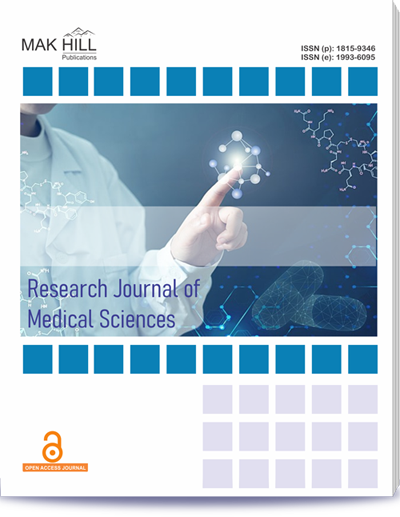
Research Journal of Medical Sciences
ISSN: Online 1993-6095ISSN: Print 1815-9346
Abstract
The term "morbus regius" formerly referred to jaundice and it was thought that a king's touch may be the sole remedy. The word jaundice originated from the French word jaune, which signifies yellow. Hippocrates wrote about the yellow discolouration associated with fever before the year 400 B.C. The purpose of this research is to determine the appropriate management of jaundice in pregnancy based on etiological factors, as well as to identify various etiological factors leading to jaundice in pregnancy, evaluate various maternal complications in patients with jaundice in pregnancy and observe various adverse fetal outcomes in mothers with jaundice in pregnancy. The present study was a prospective observational study. This Study was conducted from 18 months at department Obstetrics and Gynaecology, Calcultta National Medical College and Hospital, Kolkata. Total 40 patients were included in this study. Majority of patients are with Preterm Pregnancy (<37 weeks) with 78.8 and 21.2% cases are term pregnancy. All of the Patients (100%) have icterus and 45% of the patients have pallor. The least is pedal oedema (17.5%). We saw from the study that maximum number of patients that causes jaundice are Obstetrics Cholestasis (65%). Next etiology is Hepatitis, among them HAV is 1, HEV is 1, AntiHCV is 1 and 4 of them are Surface Antigen (HBsAg) positive. The least common cause is Severe preeclampsia (17.5%) along with Hepatitis. In conclusion, the study of fetomaternal outcomes of jaundice in pregnancy at a tertiary care hospital highlights the significant impact of this condition on both maternal and fetal health. Jaundice during pregnancy is associated with increased maternal complications, including preeclampsia, hepatic dysfunction and a higher incidence of cesarean deliveries. Fetal outcomes also demonstrate a heightened risk, with increased rates of preterm birth, low birth weight, fetal distress and in severe cases, stillbirth. Early diagnosis, close monitoring and appropriate medical interventions are crucial in improving both maternal and neonatal outcomes. The findings underscore the need for enhanced awareness, timely referral and multidisciplinary management of pregnant women presenting with jaundice to mitigate potential adverse outcomes.
How to cite this article:
Shankhadhar Panja and Fahim Al Mamun. Fetomaternal Outcome of Jaundice in Pregnancy in a Tertiary Care Hospital.
DOI: https://doi.org/10.36478/10.59218/makrjms.2024.3.18.469.472
URL: https://www.makhillpublications.co/view-article/1815-9346/10.59218/makrjms.2024.3.18.469.472